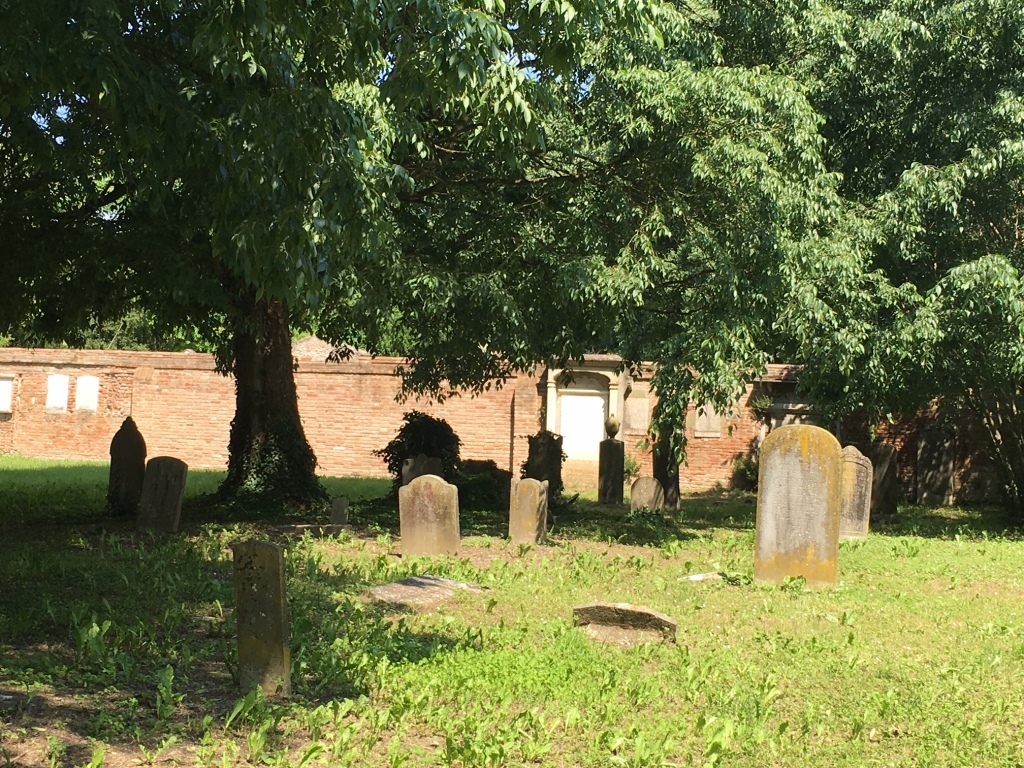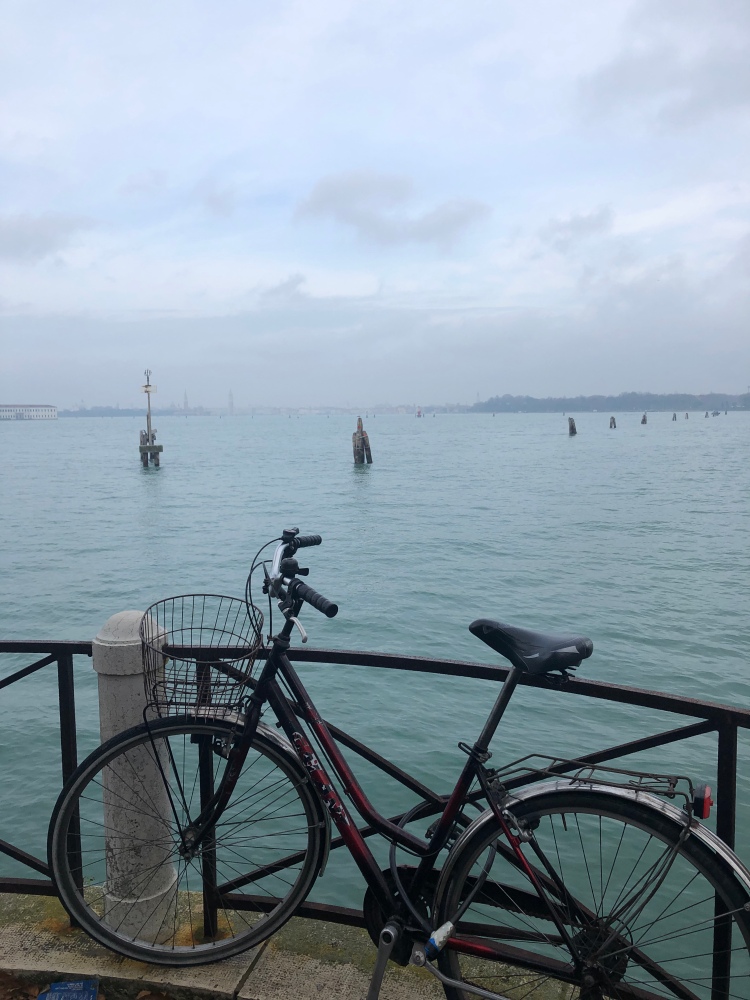
There’s something appealing about a bicycle. Just two wheels, seat, basket, it has to have a basket – that’s essential as far as I’m concerned. A bike gives you the freedom of the open road. You can go anywhere if you have a bike. You can choose where to go and you can choose when. Entirely independent and no cost! Apart from the initial purchase price of the bicycle of course.
A BICYCLE is ideal for visiting a city or town for the first time. If you take the medieval city of Lucca in Italy you have the perfect example. Lucca is a circular town surrounded by monumental walls which gird the city and originally kept it safe from intruders. You can cycle around the top of this wall, at a height of about 20 metres above the surrounding countryside. I love doing this bike ride at dawn – as the sun is coming up. Even in the height of the summer it’s cool. As you cycle you can watch the city waking up, coming to life, stretching and raising its sleepy head. The walls extend for a distance of about five kilometres around the city. On the first circuit you might see one person walking a dog, by the third circuit a few joggers have appeared, by the fifth a few fellow cyclists. As you cycle you have freedom of movement, thoughts and ideas. I love to look around and consider the landscape, buildings, fields, alley ways, gardens, courtyards. Not just now but in the past too. The map below shows the medieval walls around the city of Lucca. You can imagine how vital these walls were to the inhabitants of the city. At night the huge oak doors were closed and bolted. The citizens could sleep safely in their beds.




ABOUT 150 kilometers north-east of Lucca is the delightful town of Ferrara. Ferrara is beautiful and magical, even the cathedral has a fairy-tale rosy hue to its façade. Ferrara is great for cycling too. I first came to this town as a result of Giorgio Bassani’s novel ‘The Garden of the Finzi-Contini’. This elegant and poignant book tells the story of Ferrara’s Jewish population in the years leading up to the Second World War. The Finzi-Contini were a wealthy Jewish family who lived on Corso Ercole d’Este – they had a tennis court in the garden. When the town council declared that Jewish people could no longer be members of the tennis club the family effectively created their own tennis club at home. They continued to play. I started my cycling tour of Ferrara with a circuit of the city walls. Unlike Lucca you don’t ride along the top of the wall – instead there is a cycle path at the foot of the wall that you follow. The ride gives a dramatic perspective of the city’s enormous medieval fortifications. You can glimpse the jumble of palaces, houses, churches and warehouses, jostling for space in the crowded 15th century streets.
The turning of the bicycle wheels, the breeze in my hair and the changing panorama unveiling itself before my eyes was captivating. As I cycled I was back in 1930s Ferrara, I was cycling from the Jewish neighbourhood northwards to the rambling home of the Finzi Contini with its secluded gardens and slightly-overgrown tennis court. Before the war there was a Jewish population of hundreds in Ferrara. The tragedy is that by 1945 just a few dozen remained. Even more distressing is the fact that families like the Finzi Contini were being deported to Auschwitz as the Allies were marching north through Italy. They nearly made it………..but not quite. I called in to visit the Jewish Cemetery too. The imposing metal gate is always closed – but you can ring on the care-taker’s door bell and you’ll be let in. Inside I was the only visitor. Numerous tombstones and several small temple-style buildings commemorate the large and successful Jewish population who once lived in this town. The atmosphere is peaceful, calm, serene. Today there is still a very small Jewish population in Ferrara.





Back on the bike and into town, Corso Ercole d’Este, Palazzo Diamante, Il Castello and the Cathedral. Everyone in Ferrara rides a bike – just everyone and there are no rules. You can ride the wrong way down a one way street, you can cycle on the pavement. You can do anything you like as long as you don’t crash into a pedestrian or a fellow cyclist. Ferrara is civilsed too. When you sit down for an aperitivo it is served with a delicious selection of snacks and sometimes even mini-sandwiches. Delicious! The great advantage of smaller cities like Lucca and Ferrara is that they haven’t been entirely swamped by tourists yet! It is still possible to appreciate their history, architecture and atmosphere without being jostled by thousands of other visitors.
Now interestingly viewing a city by bike can actually separate you, very effectively from the marauding hoards. This is particularly true in Florence, birthplace of the renaissance, and probably the most visited city in Italy after Rome. My cycling tour of Florence started once again, very early in the morning. I think it was still dark. Florence is interesting because it is a small city, but a little too large to really enjoy and explore on foot. By bike it is perfect. About 3 miles from west to east and perhaps two miles north to south. For a whistle-stop tour of the squares and historic buildings of Florence you can’t do better than a bike.
I found myself drawn to the Foundling Hospital, this was the place where unwanted babies were left to be cared for by the nuns. Outside the door there is a large stone shelf which was where the babies (usually new-born) were left. This brought a tear to my eye. As I prepared to get back on my bike and continue on through the narrow, sometimes smelly streets of Florence I saw a band marching towards me. I think the band were Alpini veterans. The Alpini are an Italian regiment from the mountains. They were very important especially in the First World War, defending and even repelling invaders from the collapsing Austro-Hungarian Empire. They wear jaunty peaked hats (a bit like a trilby) with a feather in the side.
Back on the bike and heading for the banks of the River Arno. My bicycle bumps over the cobbles. I enjoy the view, the gentle breeze and the noise and vibrancy of the streets. Early morning deliveries, smells from the bakery, kids going to school in raucous gaggles. For me the bike propels me through town at just the right speed, not too fast, not too slow. I guess for me the bike is a metaphor for life.
For more ideas on cycling in Italy don’t hesitate to drop me a line. or if you’d like to hear more just tell me!





VENICE – whilst you can’t cycle in Venice itself you can cycle around the edge of the lagoon of Venice. Even better you can cycle along Lido di Venezia, the long, flat, sandy spit of land that separates the Lagoon of Venice from the Adriatic Sea. It’s easy, scenic, cycling, just perfect!!
- For more on bicycles and cycling ideas:
- Lake Lucerne, Switzerland – Back on the bicycle…….
- Oxford – A series of unexpected events…
- Lily Bollinger and Champagne – Lily’s iconic bicycle was recently restored.
- Thank you for reading, don’t hesitate to explore further for numerous articles on history, art, mountains, walks, culture, food and wine…..Greyhound Trails Travel
- Updated: January 2021


Thank you for taking me along on your bike adventure! You took me right back to Lucca, where I spent some time in the square trying to decide which of the 6 gelato shops to visit! We called it “Laundry Square” because half the apartments had a line full of laundry hanging out for the world to see!
LikeLiked by 1 person
That is Italy for you Mary Lou! Everything is out there….emotion, drama, underwear!!
LikeLike